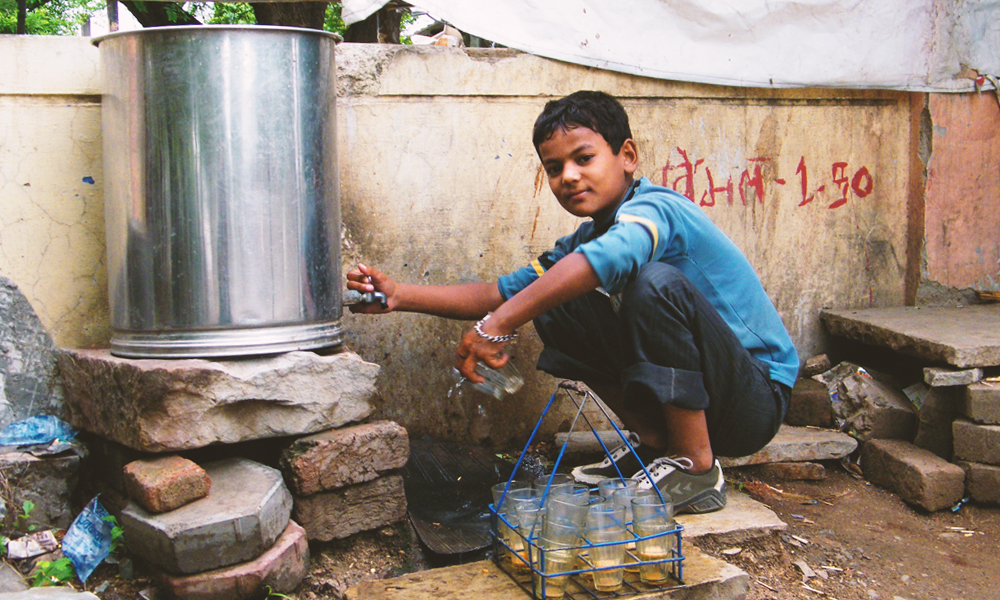
Image Credit: Wikimedia
World May Witness Increase In Child Labour Amid COVID-19 Pandemic: Report
India, 5 Aug 2020 10:11 AM GMT
Editor : Prateek Gautam |
A free soul who believes that journalism, apart from politics, should stand for social cause and the environment.
Creatives : Abhishek M
" An engineer by profession, Abhishek is the creative producer of the team, graphic designing is his passion and travelling his get away. In more ways than one, he makes the content visually appealing."
“Last month alone, more than 25 children engaged in child labour in Delhi were rescued," Anurag Kindu, Chairperson, Delhi Commission For Protection of Child Rights (DCPCR), tells The Logical Indian.
A statement issued by the Delhi Commission for Protection of Child Rights (DCPCR) has said that as per the prediction of International Labour Organisation (ILO), the world may witness a surge in child labour for the first time in 20 years amid the COVID-19 pandemic.
Talking to The Logical Indian, Anurag Kindu, Chairperson, Delhi Commission For Protection of Child Rights (DCPCR), says: "Child labour is rampant in the entire country but mostly in cosmopolitan cities, and not so much in rural areas. This is because cities are where there are factories and mines, and need for labour."
Last month alone, more than 25 children engaged in child labour in Delhi were rescued by DCPCR, Anurag says.
"We have local networks that help and track down kids. We also have a scheme that gives cash rewards to people who give us correct information about child labour," Anurag says, focusing on Delhi.
"Upon receiving such information, a meeting is held, which involves DCPCR, Delhi Police, the sub-divisional magistrate, the labour department, the childline and the NGO(s) that gave us information based on which we conduct the raids. In a pre-rescue meeting, we do the mapping -- of areas where there could be child labourers working," he adds.
Following a meeting, someone visits the place to ascertain if there is a risk involved in the rescue mission, and how much police force would be required.
"We have to be very careful about keeping the information to ourselves and ensure that they are not leaked. Otherwise the children would be removed from the spots," says Anurag.
"The children, upon being rescued, are produced before the Child Welfare Committee, a statutory body constituted under the Juvenile Justice Act. Here, their statements are recorded. Consequently, a complaint is registered against the employers, and then the investigation and trial begin," he adds.
Anurag says that these children are often made to work after being lured with promises of a new job, better income, better living conditions and support to their families.
"On other occasions, they seek employment out of having no choice, extreme poverty and the need to support a family that has no livelihood," Anurag explains.
"The unemployment issues plaguing our country unfortunately pushes the older boys to seek jobs at such shops and factories. Most of the time, their parents are aware of their plight, however, they are victims of their situation," he adds.
It is unfortunate that children have to be engaged in such jobs at a time when they should ideally be learning, bonding with nature and friends, and exploring the world. Child labour often leads to the children being manipulated and ill-treated, which often results in depression.
According to the data of 2011 Census, India had 10.13 million child labourers, between the age of 5-14. This problem, however, is not uniform across the country, with states like Uttar Pradesh, Bihar, Rajasthan, Maharashtra, and Madhya Pradesh reporting a higher prevalence of child labour than others.
Also Read: End Child Labour By 2025: Will India Achieve Milestone Amid COVID-19 Pandemic?
 All section
All section














